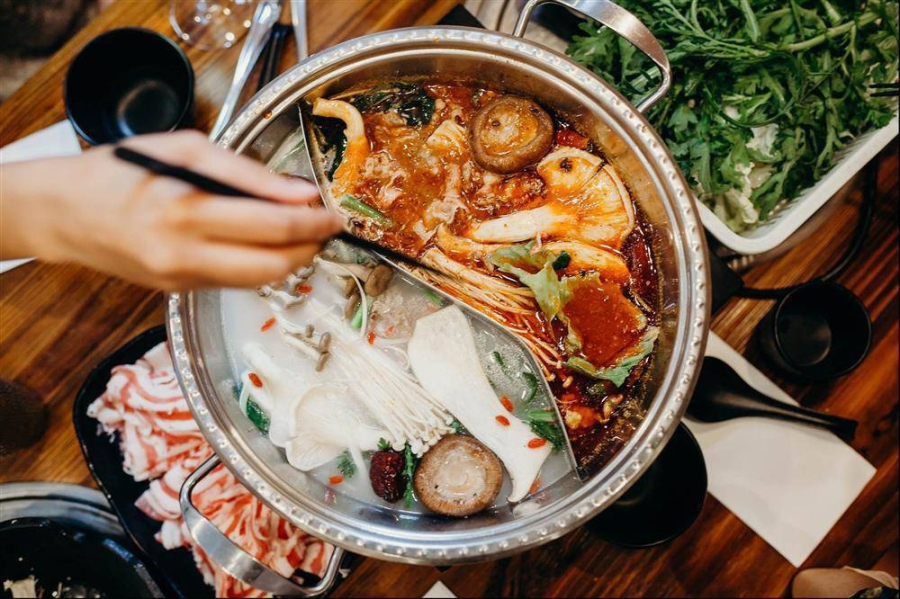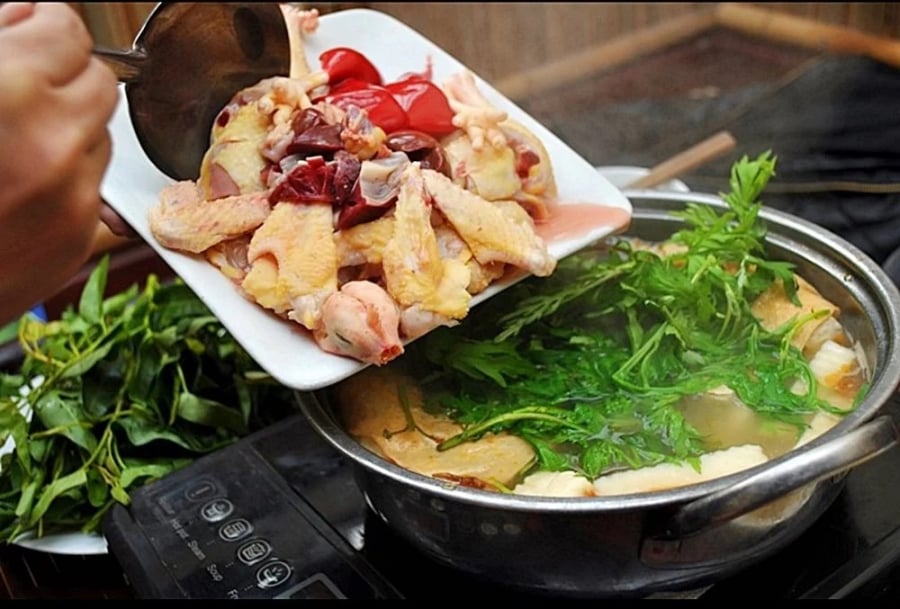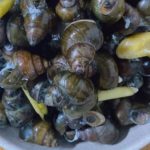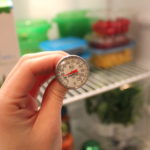Sitting and eating hot pot for too long
Indulging in eating and drinking is a habit of Vietnamese people, but it is a mistake when eating hot pot. Eating continuously for hours will overload your stomach and can cause digestive disorders, abdominal pain…
In the process of eating, you should change the hot pot broth once every 30 minutes to avoid prolonged cooking of the food, which can increase the nitrate content, destroy vitamins, and become harmful to the body, even leading to cancer.

Using too much chili sauce, MSG, and seasoning
These seasonings should only be used in moderation to create flavor, rather than being overused because they are not good for your health.
In addition to the common mistakes mentioned above, people should also pay attention to certain groups who should not eat hot pot due to its negative effects on certain medical conditions.
– People with gastric ulcers, mouth ulcers, pharyngitis, hemorrhoids, etc., should not eat hot pot.
– People who are allergic to seafood or mushrooms should avoid consuming these foods when eating hot pot.
– People with gout, high blood pressure should also avoid eating too much as hot pot dishes are usually rich in nutrients.
– Finally, people with intestinal diseases, especially acute enteritis.
Eating hot pot that is too hot
Huddling around a hot pot is a favorite pastime of 99% of Vietnamese people, and the belief that hot pot must be eaten hot for it to be delicious and immediately enjoyable is fantastic. However, from a scientific point of view, eating hot pot that is too hot can cause damage to your mouth, esophagus, and stomach…
Therefore, when food is taken directly from the hot pot, it should be left to cool down a bit before enjoying.
Eating undercooked ingredients invites bacteria and parasites to “visit”
Many people believe that meats and seafood should be eaten undercooked to preserve their freshness and nutrients. This is a common but incorrect belief because eating undercooked food can unintentionally create favorable conditions for bacteria and parasites to enter the digestive system.

Raw foods in hot pot dishes can contain pathogens such as E.coli, vibrio cholerae, and various types of worms that cause dangerous diseases. Raw or undercooked pork may contain bacteria such as salmonella, E. coli, and listeria. Beef is also an indispensable ingredient in hot pot dishes. However, eating undercooked beef can pose the risk of contracting beef tapeworm disease, which can cause serious complications for those unfortunate enough to be infected.
To ensure safety when enjoying hot pot ingredients, you should wait for the hot pot broth to reach a high boiling point before starting to put food into the hot pot to ensure that the food is properly heated and cooked. Thinly sliced ingredients should be immersed in the boiling broth for about 1 minute to ensure thorough cooking. For ball-shaped ingredients or those with thick shells, such as shrimp, clams, and snails, they should be immersed for at least 5 minutes.
Using the same chopsticks to handle raw and cooked food
This is also a common eating habit that poses many health risks, but many people still practice it. Similar to eating undercooked food, using the same pair of chopsticks to handle both raw and cooked food inadvertently provides an opportunity for various bacteria in raw food to easily invade our mouth. Therefore, instead of using the same pair of chopsticks for multiple purposes, it is advisable to prepare different pairs of chopsticks for eating cooked food separately, in order to avoid bringing diseases into our bodies for the sake of convenience in the moment.
- Individuals with gastric ulcers, mouth ulcers, pharyngitis, or hemorrhoids.
- Those allergic to seafood or mushrooms should avoid these foods in a hot pot setting.
- People with gout or high blood pressure should eat hot pot in moderation due to its rich nutrient content.
- Individuals with intestinal diseases, especially acute enteritis, should avoid hot pot.
Tips to Help Ensure Your Refrigerated Food Stays Fresh and Cancer-Free
Many are unaware of the potential danger posed by food stored in their refrigerators, however the fear of cancer is a reality that looms large. Find out how you can reduce your risk of developing cancer from food stored in your fridge.
Strategies for Quickly and Efficiently Utilizing Leftover Food After Tet
With Tet now behind us, housewives everywhere are facing the challenge of what to do with leftover food. It’s a difficult decision – throwing it away is a waste, yet keeping it can lead to eating the same dishes day after day. But don’t fret – it’s time to take a trip to the kitchen and get creative with all of that leftover food!



































